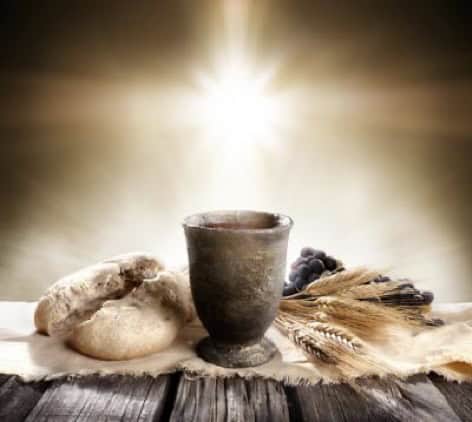
Fleshbread and Bloodwine
Material Spirituality in a Post-secular Age
Marius Timmann Mjaaland, University of Oslo
You might think a post-secular spirituality would be less traditional than earlier forms of Christianity, or more in keeping with our high-tech, digital age. But the reverse might actually be the case, if you look at an important trend in Norwegian church and culture.
The Lord’s Supper, like baptism, becomes increasingly central to formulating a Christian anthropology in the writings of Martin Luther. His understanding of the Lord’s Supper in Confession concerning Christ’s Supper (1528) continues the fundamental duality of theological anthropology, right into the reflection on Christ’s real presence in the Lord’s Supper. This is not to be understood merely symbolically, he argues; on the contrary, we see a transcendence of the natural properties of bread and wine through the sacrament of the Lord’s Supper. The transcendence has the character of an immanent transcendence, a transcendence within the material, in the bread and the wine, which is condensed and re-metaphorized by the paradoxically sounding fleshbread and bloodwine:
For it is no longer crummy bread in the oven, but rather meat-bread (fleischsbrod) or body-bread; that is a bread which has acquired a sacramental nature become unified with the body of Christ. The same is true with the wine in the cup; ‘This is my blood’, has the little word ‘This’ referring to the wine. For it is no longer bad wine in the cellar, but rather blood-wine (blutwein); that is, a wine which has acquired a sacramental nature and been unified with the blood of Christ.
(Luther, Vom Abendmahl Christi. Bekenntnis (1528), WA 26, 445)
The sacrament appears here as a Christological event, in which the individual participant shares through the Eucharist. It is basically a very prosaic event: the bread is consumed by the body as one eats – chews, swallows and digests. The sacramental meaning then lies in the celebration and the feast, and just participating in the meal is an expression of enthusiasm (literally: being-in-God). Whoever participates in the Lord’s Supper joins a larger body, the body of Christ. Luther also points out in the Large Catechism that it is not the “worthy” who need to come to communion, but the unworthy. It is precisely the unworthy and poor – in their own eyes and those of others – who form the starting point for the community of the saints, a community of forgiven sinners. Because all people need the mystery, the new creation of man and the transformation from death to life, the Lord’s Supper can be celebrated often. An absolution, the forgiveness of sins, also takes place in the Eucharist. When the community celebrates Christ’s sacrifice, it also shares in the sacrifice, is united in Christ’s body and receives this body as a gift.
Since the Lord’s Supper became so central to theology during the Reformation, it is interesting to see how participation in the Lord’s Supper has seen a strong upswing in Protestant churches in recent decades, especially in the Nordic countries. Since children gained access to the communion table together with other baptized members of the church in the 1980s, the threshold for going to communion has dropped considerably. Today, the entire congregation pours forward to receive the bread and wine, and it is a development that will probably only continue. In the Lord’s Supper we share in the Trinitarian mystery with the senses and the body, regardless of whether the words may seem foreign or inadequate. The event as such seems to overflow with meaning, through the paradoxical bloodwine and fleshbread. This is a way of regaining the fullness of the gospel; a full understanding of the Word, yet without letting go of critical reflections and objections in theological questions.
